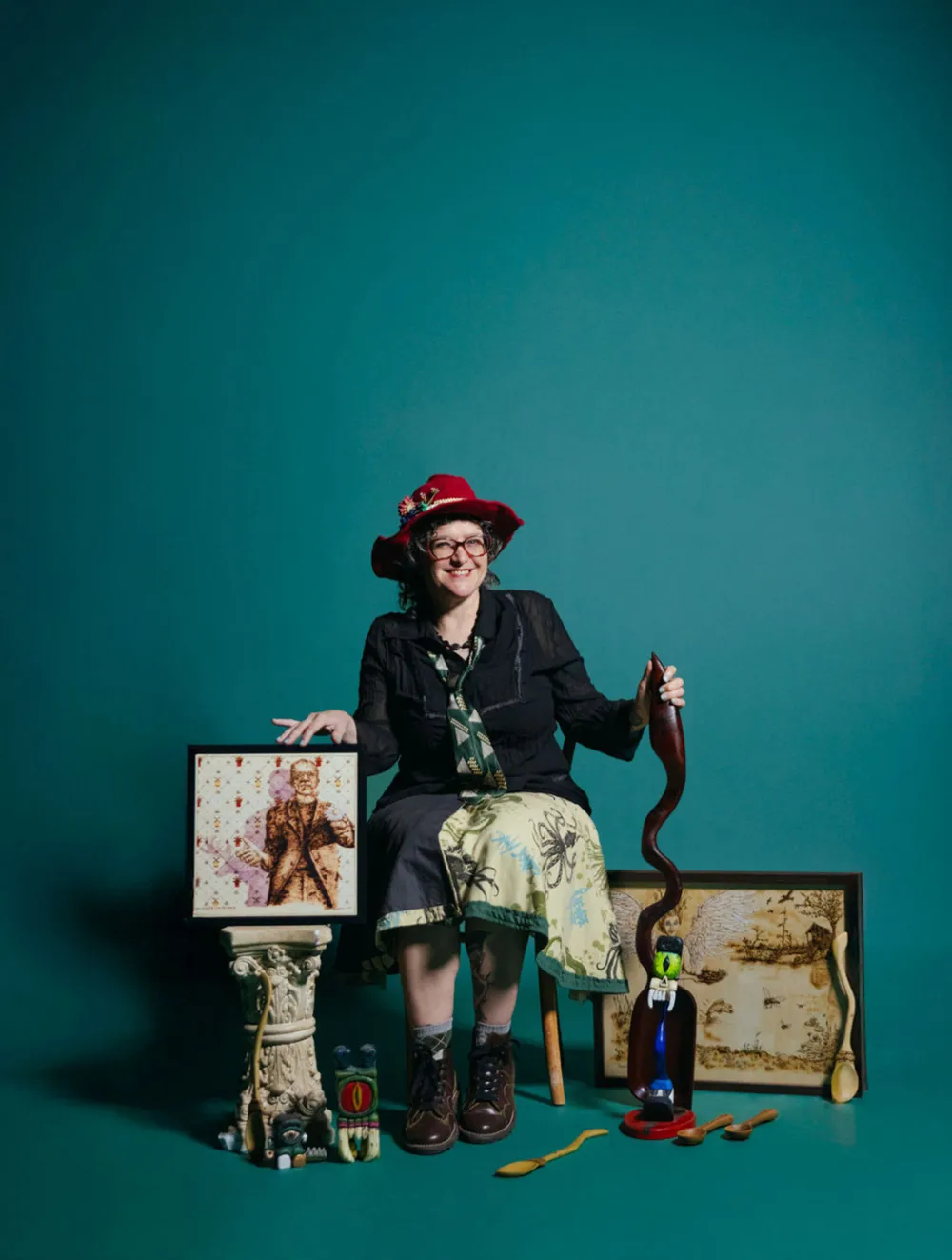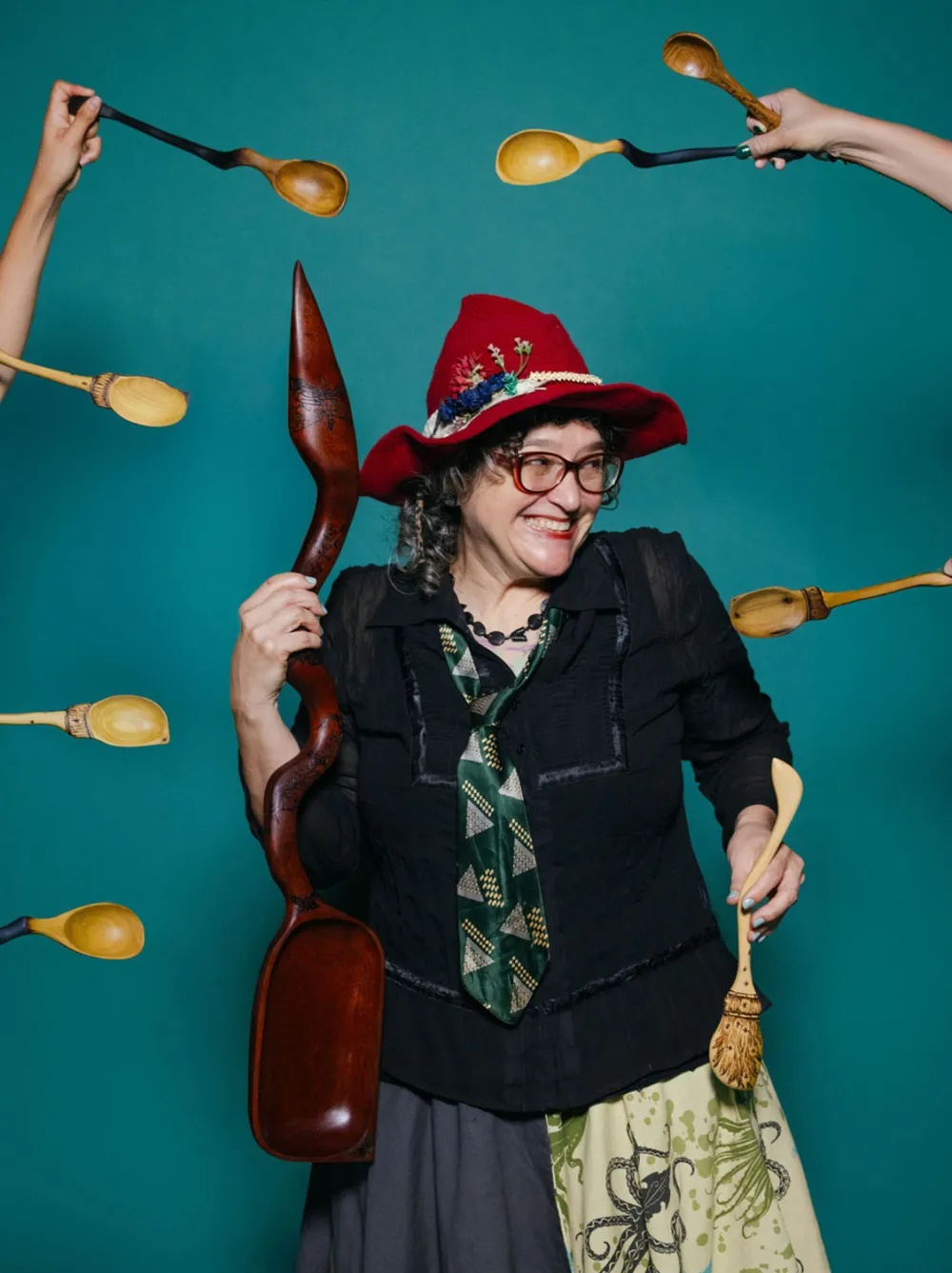Staff Creatives: Sarah Snow

Creativity runs high among College of Fine Arts staff members, both in their day jobs in the college supporting our research and educational mission and in their personal lives. The college has an unusually high number of practicing artists, musicians and performers — many of them alumni — on our teams.
Sarah Snow (B.F.A., Studio Art, 1996) is the director of web strategy in the Dean’s Office.
How many years have you worked in the College of Fine Arts?
I started at the college as a web developer in October 2007, so 18 years. I am also a graduate from the Department of Art and Art History where I received a B.F.A. in Studio Art in 1996.
Describe your creative practice.
I collaborate with my husband, Terry Snow, to make sculpture, gifts, turned vessels, pyrography drawings, toys and unique home furnishings out of wood. We started making toys as a hobby but wanted to sell our work at the Blue Genie Art Bazaar, so we started a business in 2014, called Chaos Woods. We describe our creations as having surprising juxtapositions, exceptional craftsmanship and a touch of chaos. Terry does most of the woodworking and carving. I focus on finishing details using wood burning pyrography tools, paints and stains.
How did you get started in your creative practice?
Coming from a creative family, I’ve always had a creative practice. As a college student, I focused on transmedia courses, which led me to web design and development, but I’ve always enjoyed fabricating, drawing and working with my hands. In college I had a work study job helping to build exhibitions at the Austin Children’s Museum where I learned a lot about wood shop tools. Years later my husband started the woodworking practice and built up our workshop. We purchased our first pyrography machine to put signatures on our early creations, but I found I really enjoy the line and shading quality and challenges of the tool for drawing.
What does a typical day look like when you’re balancing both your work and creative passions?
In both my work for the college and my work for Chaos Woods, I find a great deal of creativity and passion. The most obvious difference is that my work for the college is on the computer. There’s a period of transition after work for daily life things. Then I usually set to work applying the details to an object that has come out of Terry’s work in the wood shop. I’m lucky because this allows me to spend time with my family while I work. I add a lot of small decorative details, but we also have drawing and sculpture projects that are more complex. We usually have several different projects going with various degrees of complexity that I can choose to work on depending on my level of energy and focus.

Any advice for students as they think about their professional pathways?
In college, I really enjoyed learning about conceptual art. It gave me a foundation on which to approach everyday things in life as art or as a creative problem to be solved. This was important to me because I was frequently struggling without enough resources or time. Instead of spiraling into negativity about not having enough, not liking my job, having to study a subject that didn’t interest me or whatever hurdle was in the way of me being able to make art, I started to seek out the little things that I could be creative about. Practice adjusting your perspective to find the reward in everything you undertake. It may not always be possible, but it will help you live a more satisfying life than if you think negatively about everything.
How do you define success as an artist? How has that definition evolved over time?
There are many people who say that success is a journey not a destination and that it’s never done. I think that feels absolutely true for me. If I can wake up every day and have an opportunity to think, make or be creative I am satisfied and feel rewarded. That is success for me. There have been times when I did not have the opportunity to be creative, when I had to do what I could just to survive and make it through some circumstance that did not allow time for creativity. These are the low points that taught me how important making space in my life to be creative is for my wellbeing and sense of success. Recognition and appreciation by others for my creative endeavors was once more of a goal, but now I see it as icing.

